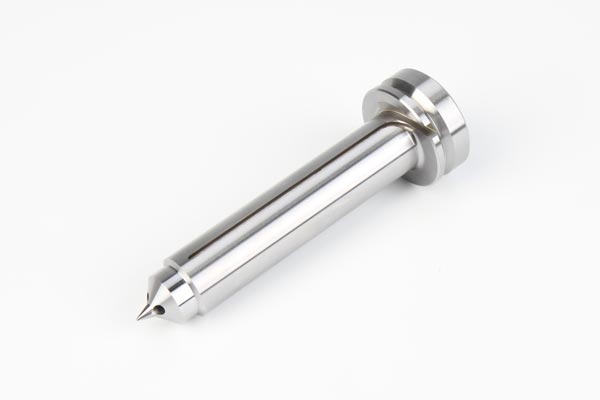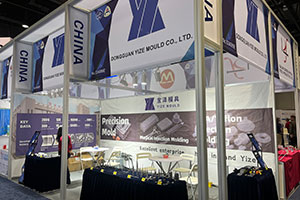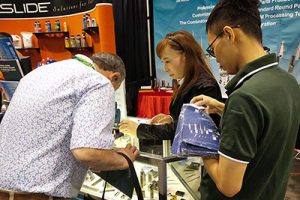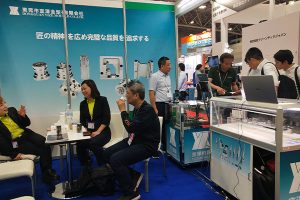The Impact of Processing Materials on the Selection of Tungsten Carbide Dies
In the booming modern manufacturing industry, tungsten carbide dies have become favorites in numerous processing scenarios due to their excellent characteristics such as high hardness, high wear resistance, and high […]
In the booming modern manufacturing industry, tungsten carbide dies have become favorites in numerous processing scenarios due to their excellent characteristics such as high hardness, high wear resistance, and high heat resistance. However, different processing materials have varying requirements for tungsten carbide dies. Accurately selecting the appropriate tungsten carbide die is crucial for ensuring product quality and enhancing production efficiency. This article will conduct an in-depth analysis of the impact of processing materials on the selection of tungsten carbide dies from multiple dimensions, including the physical properties, chemical properties, and hardness of processing materials, providing practical references for the selection of dies in the manufacturing industry.
I. The Impact of Physical Properties of Processing Materials on Tungsten Carbide Dies
(I) Density and Hardness
The density and hardness of processing materials are key considerations in the selection of tungsten carbide dies. Materials with high density require a significantly larger cutting force during processing. This necessitates that the tungsten carbide die possess higher hardness and wear resistance to withstand the severe wear during the processing effectively. Meanwhile, high-hardness processing materials cause more pronounced wear on the cutting edge of the die. Therefore, it is essential to choose a tungsten carbide die with superior wear resistance to ensure smooth processing.
Notre activité : pièces en carbure, pièces de moule, moules d'injection médicale, moules d'injection de précision, moulage par injection de téflon PFA, raccords de tubes PFA. email : [email protected],whatsapp:+8613302615729.
(II) Toughness and Ductility
The toughness and ductility of processing materials also have a significant impact on the selection of tungsten carbide dies. Materials with good toughness are less likely to fracture during processing, resulting in relatively small impacts and vibrations on the die. On the other hand, materials with high ductility are prone to plastic deformation under external forces, imposing extremely high precision requirements on the die. Thus, when processing such materials, it is necessary to select a tungsten carbide die with high toughness and high precision to ensure processing quality.
II. The Impact of Chemical Properties of Processing Materials on Tungsten Carbide Dies
(I) Corrosiveness
Some processing materials are corrosive, such as acidic, alkaline, or salt-containing materials. During the processing, these materials can corrode the tungsten carbide die, leading to an increase in the surface roughness of the die, a decrease in precision, and even damage. Therefore, when processing corrosive materials, it is advisable to choose a tungsten carbide die with good corrosion resistance, for example, a die with special coatings or surface treatments, to extend the service life of the die.
(II) Adhesiveness
Certain processing materials, such as plastics and rubbers, are prone to adhesion with the die surface during processing. This adhesion phenomenon can degrade the surface quality of the die, make demolding difficult, and even damage the die. To reduce adhesion, it is necessary to select a tungsten carbide die with excellent demolding performance, such as a die made of high-hardness, low-friction-coefficient tungsten carbide material or a die with a polished surface.

III. The Impact of Hardness of Processing Materials on Tungsten Carbide Dies
(I) Cutting Force
The hardness of processing materials directly affects the magnitude of the cutting force. The harder the material, the greater the cutting force required during processing, and the more severe the wear on the cutting edge of the tungsten carbide die. Therefore, when processing high-hardness materials, it is crucial to choose a tungsten carbide die with high hardness and high wear resistance to ensure that the die maintains stable cutting performance during long-term use.
(II) Die Life
The hardness of processing materials also affects the service life of the tungsten carbide die. High-hardness materials cause significant wear on the die during processing, shortening its service life. To extend the service life of the die, it is necessary to select a tungsten carbide material with high wear resistance and adopt reasonable processing techniques and cutting parameters to reduce die wear.
IV. Case Study
Take a certain automobile manufacturing plant as an example. When manufacturing engine cylinder blocks, the plant requires high-precision and high-wear-resistant tungsten carbide dies. Due to the high hardness and toughness of the engine cylinder block material, the requirements for the die are extremely stringent. When selecting tungsten carbide dies, the plant fully considered the physical and chemical properties of the processing materials and ultimately chose a tungsten carbide die with high hardness, high wear resistance, good corrosion resistance, and excellent demolding performance. Through actual production verification, this die performed outstandingly during processing, effectively ensuring product quality and production efficiency.
V. How to Select the Appropriate Tungsten Carbide Die Based on Processing Materials
First, it is essential to have a comprehensive understanding of the physical and chemical properties of the processing materials, including density, hardness, toughness, ductility, corrosiveness, and adhesiveness. Second, based on the properties of the processing materials, select a tungsten carbide die with corresponding performance. For example, for high-hardness materials, choose a die with high hardness and high wear resistance; for corrosive materials, select a die with good corrosion resistance. Meanwhile, when selecting a tungsten carbide die, it is also necessary to consider the precision requirements and service life of the die. Determine the appropriate die precision and wear resistance according to production requirements to ensure that the die can meet production needs. Finally, refer to past production experience and market reputation to choose a reputable and powerful die manufacturer.
VI. Conclusion
Processing materials have a profound impact on the selection of tungsten carbide dies. When selecting a tungsten carbide die, it is crucial to fully understand the physical and chemical properties of the processing materials and choose appropriate die material, precision, and wear resistance parameters based on these properties. Through reasonable selection and matching, the tungsten carbide die can maintain stable performance during processing, improving product quality and production efficiency. At the same time, attention should also be paid to the service life and maintenance of the die to extend its service life and enhance production benefits.
Articles connexes
- How to Precisely Select High-Precision Tungsten Carbide Dies
- Treatment of Abnormal Situations in the Use of Tungsten Carbide Dies
- How to Ensure High Consistency in Batch Production of Tungsten Carbide Dies
- The Impact of Collaborative Research and Development on the Technological Progress of Tungsten Carbide Die






